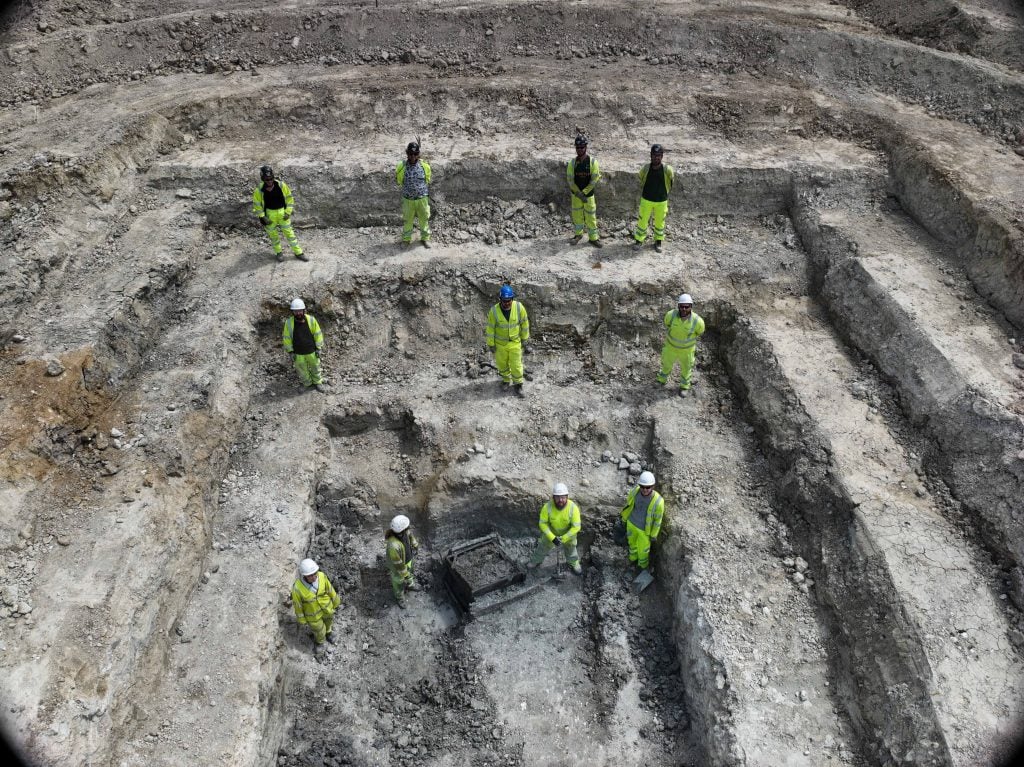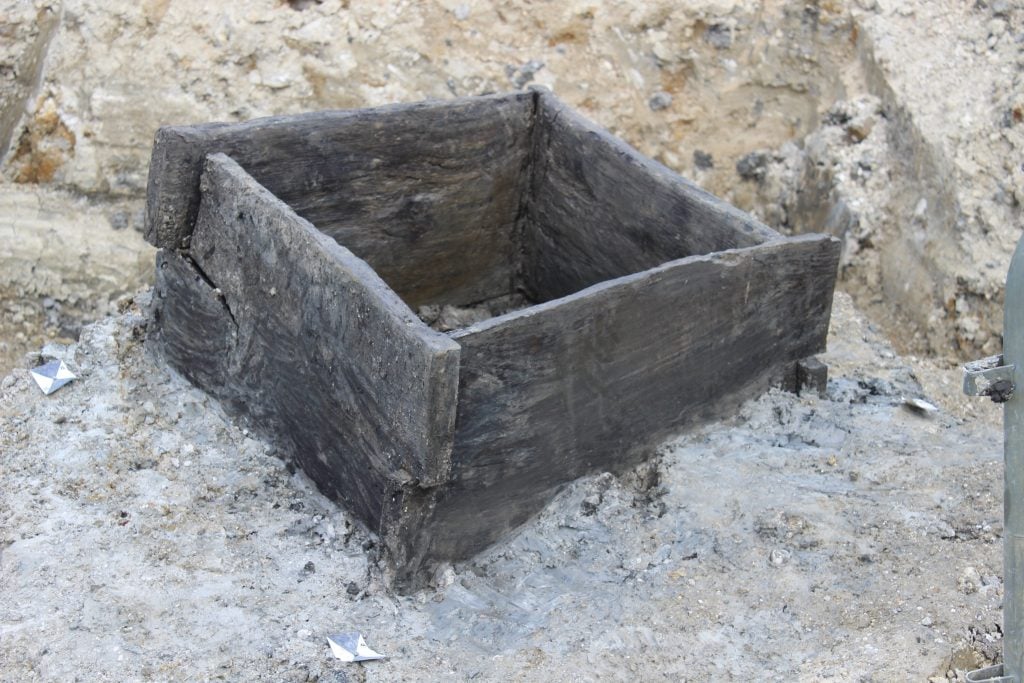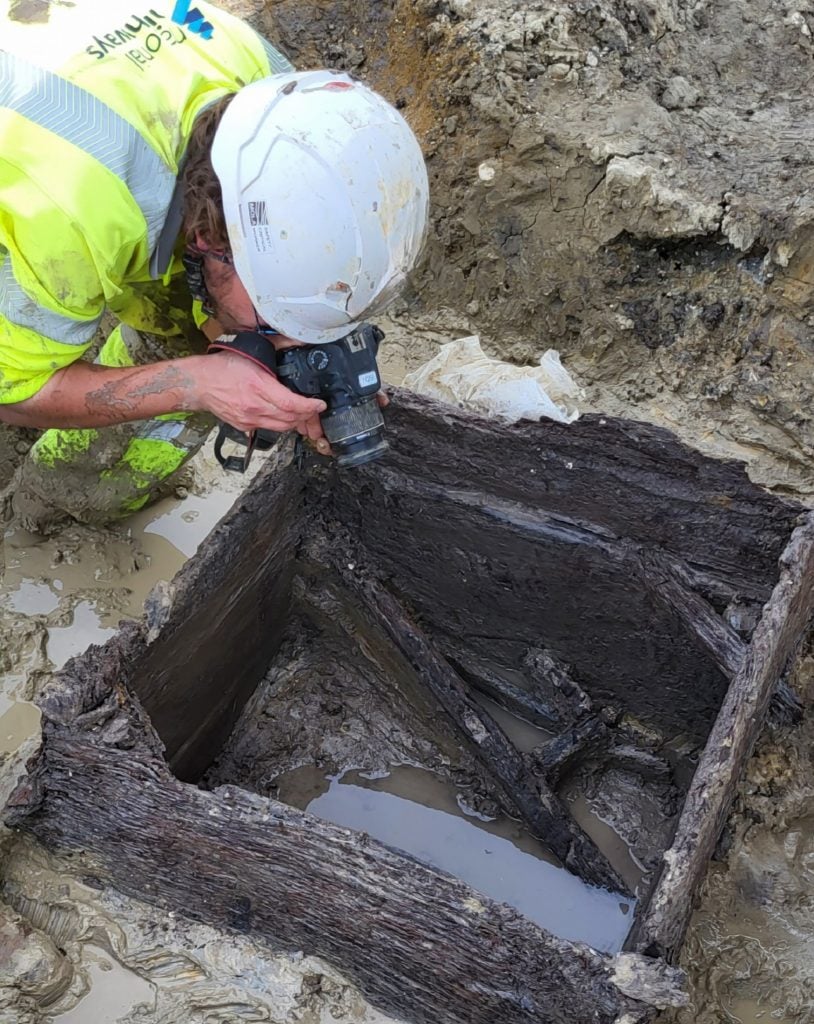Archaeology & History
Oh, Well! Failed Ancient Roman Engineering Project Uncovered in the U.K.
The remains of two wells were discovered, the older one of which had collapsed.

Archaeologists from the Museum of London Archaeology (MOLA) have excavated the remains of two ancient Roman wells that were first uncovered during road works on the A428 between Bedfordshire and Cambridgeshire in the U.K. Both wells appear to have been constructed between 43 and 150 C.E., during the height of Roman imperial excursions into the British heartland.
The road works started in December 2023 and are expected to carry on into 2027. Because the project covers an area littered with national heritage sites, construction workers are collaborating with archaeologists who survey the ground to find and retrieve artifacts. This way, nothing of historical value ends up covered by asphalt.
The two Roman wells are but the latest in a string of exciting discoveries. As early as 2021, archaeologists discovered remnants of a farmstead dated to the Iron Age, between 700 B.C.E. and 43 C.E. Newer, more technologically advanced artifacts indicate the area remained inhabited well into the Roman period. For example, archaeologists have found the remains of a corn dryer, an oven-like contraption used to dry and preserve crops.

Wooden board structure at the base of the Roman well. Photo: © MOLA.
They also found mortaria or mixing bowls used to make sauces and spice rubs. Although they did not have access to many of the ingredients that define the modern Italian kitchen, Romans spiced their food to the best of their ability. Their favorite condiment, garum, was a fermented, umami-packed fish sauce made from sardines, salt, and aromatic herbs like dill or fennel.
Other discoveries around the Bedfordshire-Cambridgeshire area include a silver ring and several shards of pottery, specifically Samian ware, a fancy type of Roman earthenware valued for its smooth surface and bright orange color that may have been produced in Gaul, or France.
Considering their underground location, it should come as no surprise that the wells were discovered last. On their own, they are evidence of the settlement’s growing population and industrial capacity. Clearly, it grew from a small Iron Age farmstead into a full-fledged, gated Roman trading outpost housing metalworkers, carpenters, and woodworkers, all of whom required access to water.
The oldest of the two wells was dug nearly 28 feet deep, the height of a two-story building. Unfortunately, this testament to Roman engineering didn’t exactly work out.

MOLA archaeologist recording carpentry waste inside the well. Photo: © MOLA.
“Despite containing the remains of a wooden ladder, this first well collapsed before they could use it,” MOLA project manager Simon Markus explained. “As we discovered when we first started our excavations here, the clay literally peels away from the more compacted earth and stone. We’ve all done a bit of DIY that hasn’t quite gone to plan, but this was a failure of Roman engineering on an industrial scale. A lot of effort would have gone into digging this well which they then had to completely abandon.”
The second, younger well, built inside an enclosure, turned out differently. Remnants of its construction show the Romans took additional measures to prevent its collapse. In addition to lining the inside with wooden boards to reinforce its structural integrity, the second well was considerably shallower than the first, reaching only 21 feet below ground.
A road uncovered at the southern edge of the excavation site lends further credit to the idea that this settlement was once a thriving trading hub, connected to settlements as distant as Godmanchester, known as Durovigutum to the Romans.





